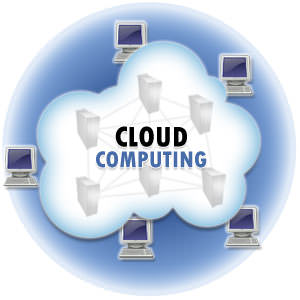9 Post Pandemic Business Trends Every Entrepreneur Should Consider
The pandemic left a long-lasting impression on businesses all over the world, with some still in recovery. In the U.S., normal operations look vastly different. Things have been even harder for small businesses, although the number of new entrepreneurs venturing out on their own has significantly increased. While this can be a positive, there are many hurdles to conquer, including price increases, finding good employees, and a loss of capital. Big businesses are laying off thousands of employees due to cash crunches, and smaller businesses are being squeezed from every area of the operation.

Hard-hit Areas Still Feeling the Effects
Small businesses in Texas, New York, and California were severely affected because there were laws enacted that left them vulnerable and unable to conduct business as they normally did. New York’s small businesses were impacted because not only was the city shut down, but restaurants were forced to turn people away who didn’t have the vaccine. As a service-based city, foot traffic was severely lessened with the closures of Broadway and other attractions. As a result, there were several closures that couldn’t rebound.
As one of the hardest hit sectors, California suffered and contributed to the supply chain issues which kept local and national businesses from getting supplies and merchandise needed to remain in operation. They also enacted laws that hurt freelancers and other types of small businesses. Non-essential businesses were closed and there were extreme restrictions for the business community to follow. Small businesses that couldn’t adapt to online or curbside models could not maintain operations with skeleton crews. During the pandemic, 7,500 small businesses were forced to permanently shut down.
In Texas, the economic activity across the state was staggering. Although the state is known for its economic strength, almost every area of business went through some type of crisis. High unemployment in key retail sectors had a huge impact, as well as the hits the state took on air travel. With 25 commercial airports, two of the busiest in the world, and home for two of the largest airlines, operations were almost at a standstill. With challenges in the hospitality sector and limited production in the oil and gas industry, the state went through many changes, crippling small businesses and leaving many to shut down for good. Anyone wondering how to start a business in California, Texas, or elsewhere, can benefit greatly from getting familiar with the shifts and trends that govern the post-pandemic era in business.
Shifting From an Unexpected Reality
There are a few major business trends largely impacted by the pandemic that are still being felt today. Big businesses also had to change their business model, with many forced to allow employees to work from home. This meant many building leases were being paid while sitting empty, employees started moving out into rural areas or different states, supply chain issues created bottlenecks where merchandise couldn’t be created or there were huge delays in getting to customers, and the list continues.
The indirect ripple effect has been huge. The PPP loan grant, as well as other government grants provided a reprieve for many, but with these programs being cut, there are still many businesses that are now realizing they must downsize to continue operations. Now, with inflation soaring to some of the highest levels in decades, as well as a fear of recession, big businesses have responded with thousands of layoffs in almost every sector, banks are failing, and retail spending is on a downward trend.
Understanding and Embracing New Trends
Small businesses must become strategic in the way they think and move, considering the trends in how business is done. To remain sustainable, figuring out how these trends can be a positive shift for their business is key. While there were many setbacks, these trends provide an upward trajectory for businesses that embrace and adapt:
1. Online stores
The pandemic created an entirely new revenue stream for small businesses through online sales. Technology continues to reshape how shopping is done, and entrepreneurs who recognize and seize this opportunity have a better chance of not only recouping their losses but expanding from a local to national presence. This solution has the advantage of helping minimize risk during economic fluctuations, expanding without the overhead, and increasing sales by being open around the clock. If you have a brick-and-mortar but need to cut hours, you won’t have these types of issues with an online presence and can focus on building brand awareness and growth.
2. Education
While entrepreneurship sounds exciting, many small businesses fail because they don’t know what to expect. There are tons of free programs and resources being made available to entrepreneurs and small business owners that used to have high price tags and were hard to access. Now, training in finance, networking, raising capital, and navigating the business world is being offered from big businesses like Bank of America, along with incubators and other opportunities from Target, Macy’s and other top retailers.
3. Alternative Funding
For small businesses experiencing challenges in getting much-needed capital, the emergence of alternative funding sources is not only common, but an important lifeline to meet critical needs. There are many types of funding now available, including crowdfunding, micro grants, grants supported by big businesses, peer-to-peer lending, angel investors, and venture capital. This helps keep those businesses who were heavily impacted afloat, even if they no longer meet the criteria for traditional funding.
4. Automation
Just like small businesses have pivoted to online stores, embracing automation is a must. This helps in streamlining operations while allowing entrepreneurs to do more with less. Data insights can assist in helping these businesses focus on areas that help with engagement, develop attractive offers, and increase their customer base.
5. Remote work
Depending on the type of business, a lot of in-house tasks can be delegated to online workers. Freelancers and remote workers are front and center, handling tasks from administrative work to creative design. For small businesses who can’t support large staff, this is a good solution to get what they need without worrying about overhead, benefits, and other expenses that could eat away their lean budgets.
6. Social media advertising
One of the best ways to reach new audiences is through social media. Small businesses have huge opportunities on various platforms to build their brands and increase awareness. Although there are times when purchasing social media ads is relevant, creativity and engagement are two of the best ways to gain a following that not only loves the content but also wants the merchandise.
7. A.I.
Artificial intelligence is becoming the next trend in how companies do internal business. This technology can create images, write text, detect AI content, and other functions that were once relegated to entire teams. Small businesses can benefit because they now have a solution for tasks that need additional manpower to make an impact. With the ability to create their own designs and marketing materials, the shift in productivity can increase while keeping costs low and opening the doors for more personalization in an era where customers value this most. While this is beneficial for small businesses, major corporations also see the value and have invested billions of dollars into this technology.
8. Technology
Small businesses have a great opportunity to test and adopt new technology at a faster pace than big businesses. This helps them become more tech savvy and advanced in areas like machine learning, VR, and AR before big businesses enter the landscape.
9. Human Resources
If the pandemic taught us anything, it’s that human capital is important. That means that focusing on mental health and how sick leave is designed must be at the forefront. Traditional sick leave looks very different from before the pandemic, and employers must rethink and shift their thinking to accommodate this new trend of occupational burnout, and offering childcare benefits if employees are required to come into the office.
Embracing change and paying attention to these trends can assist entrepreneurs in getting ahead.







